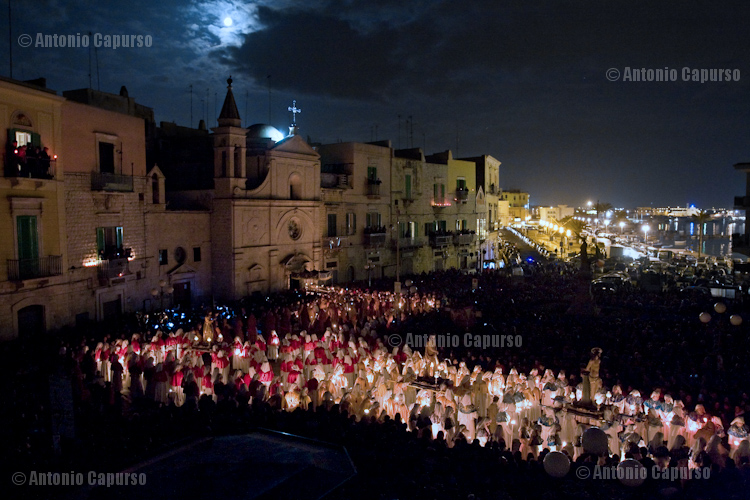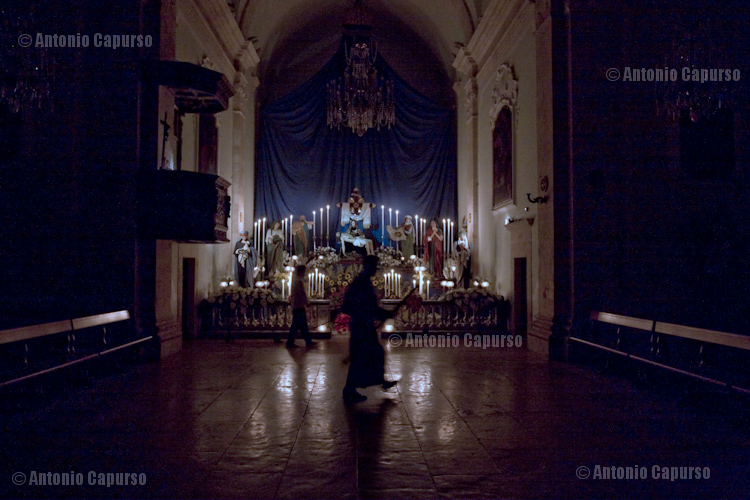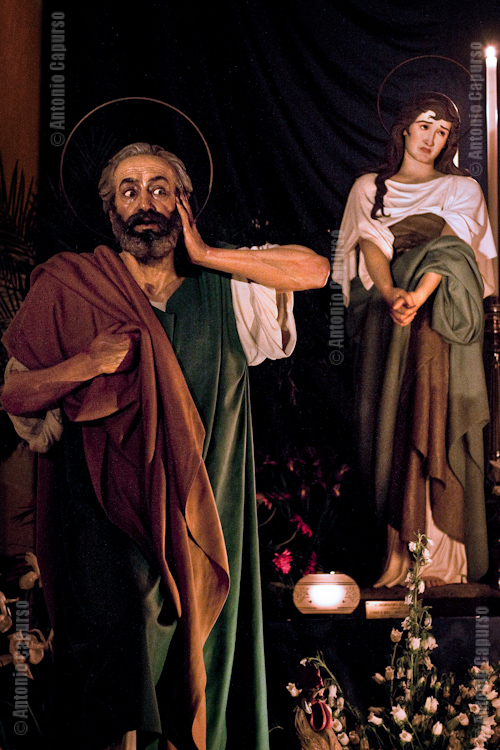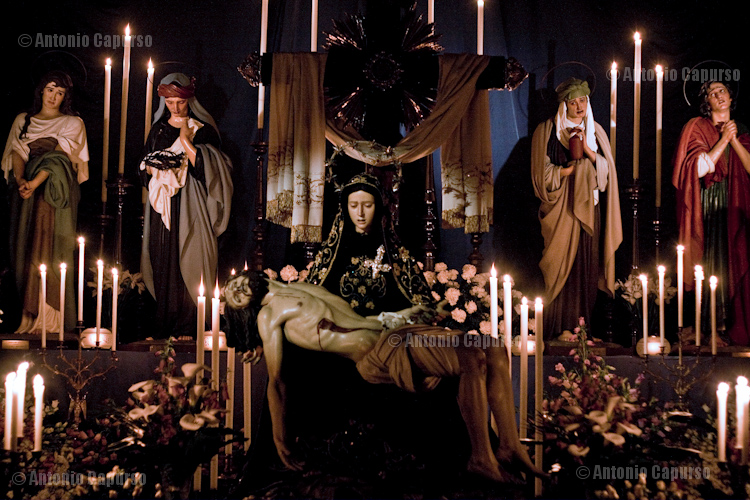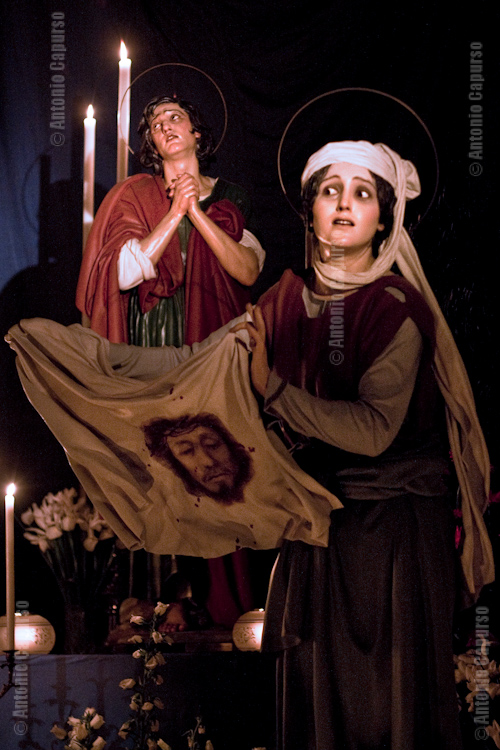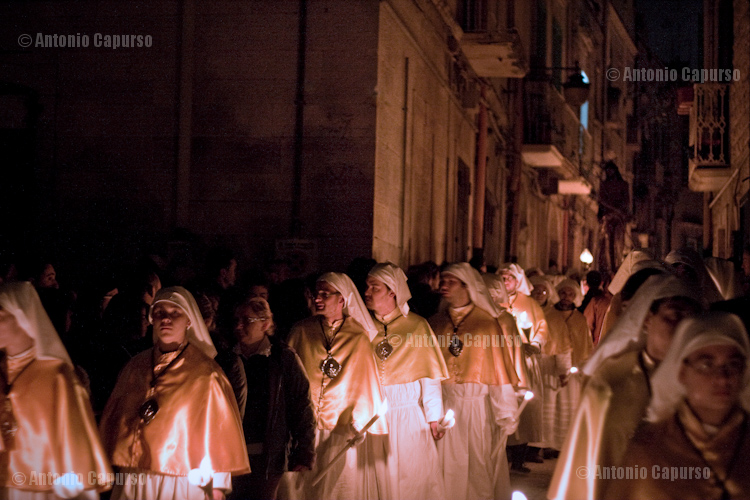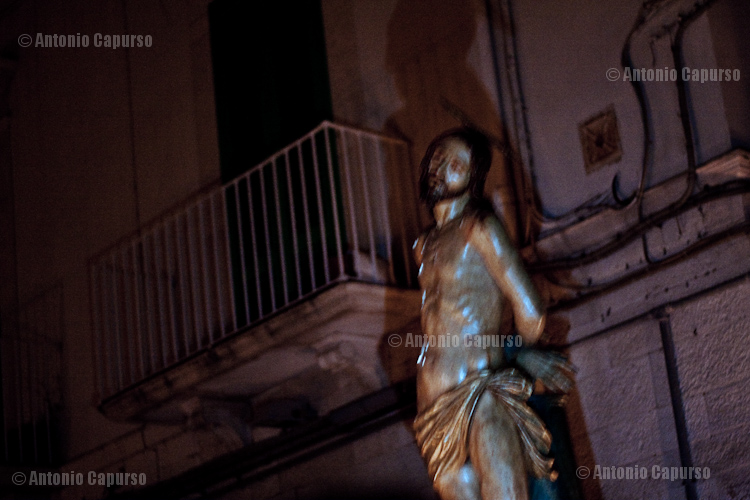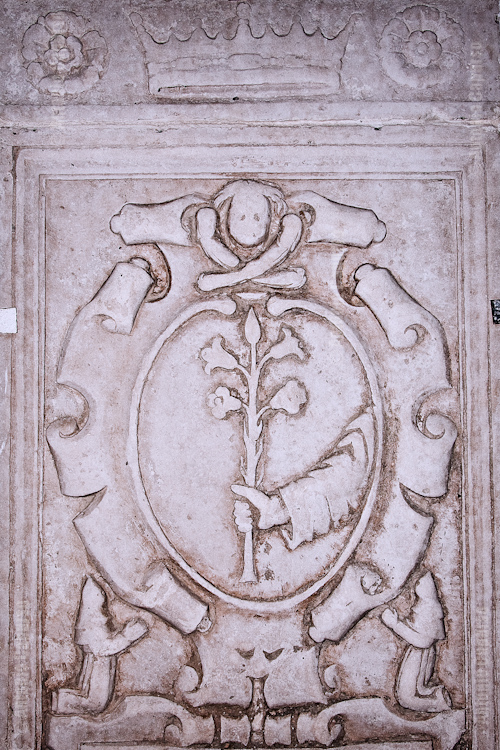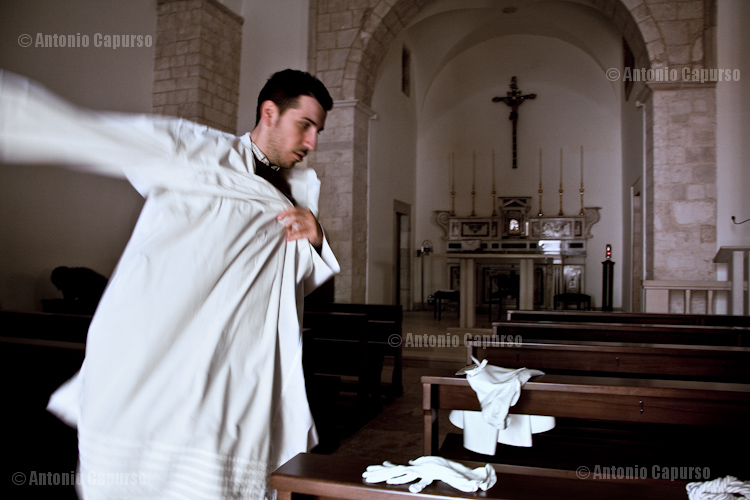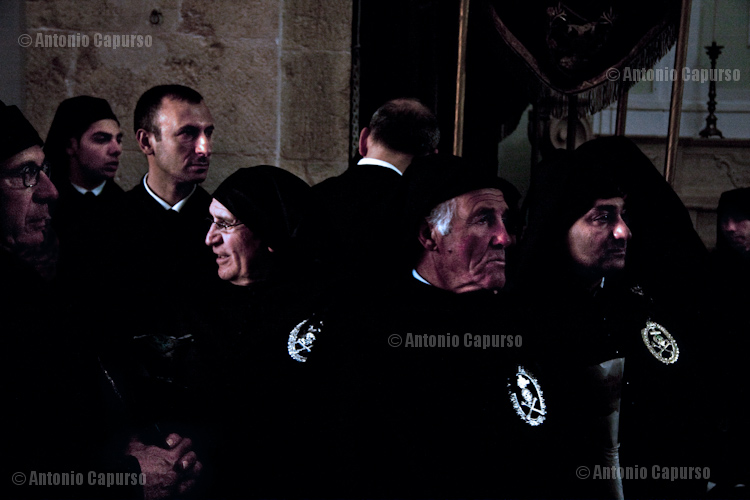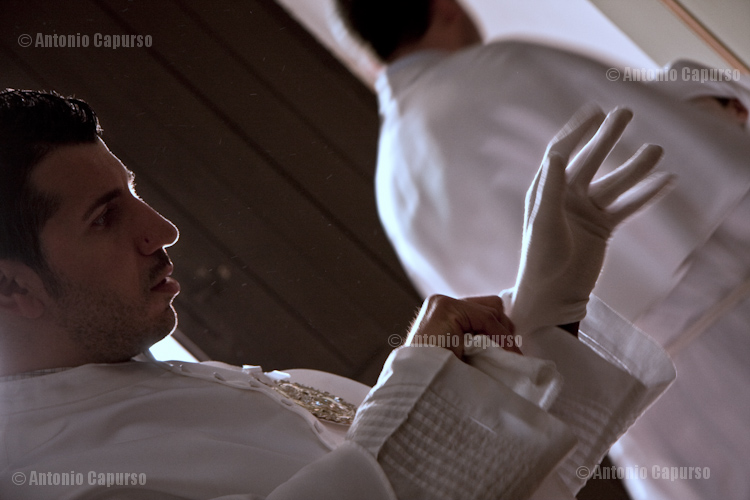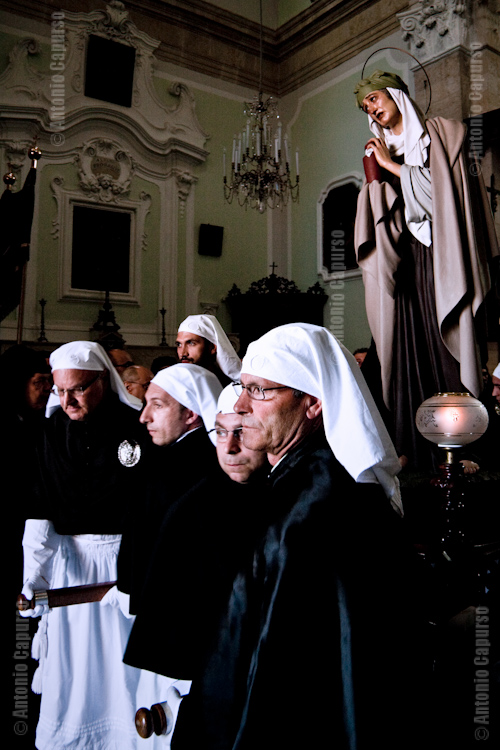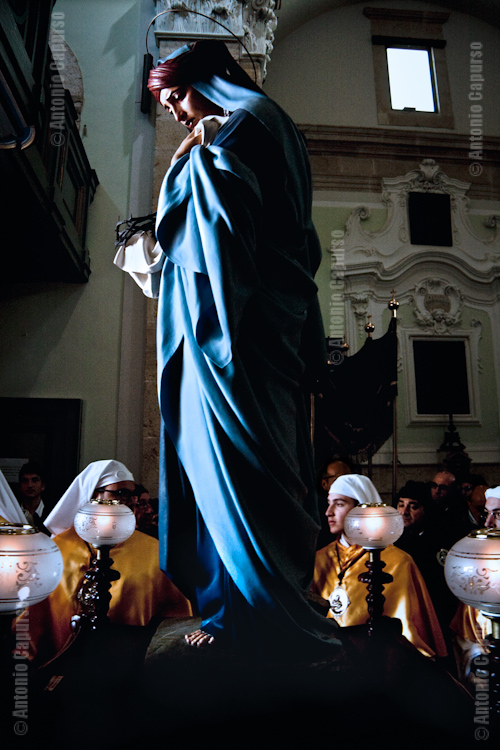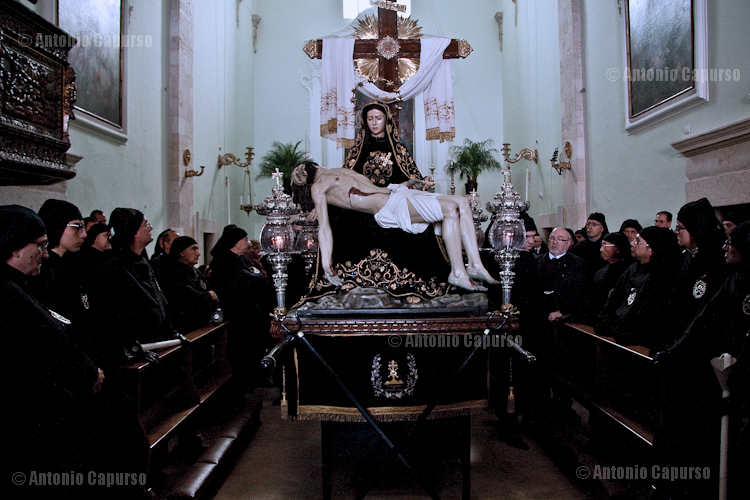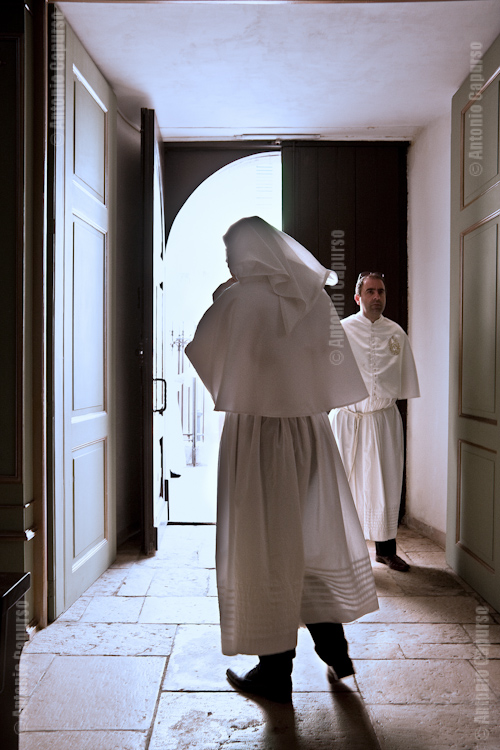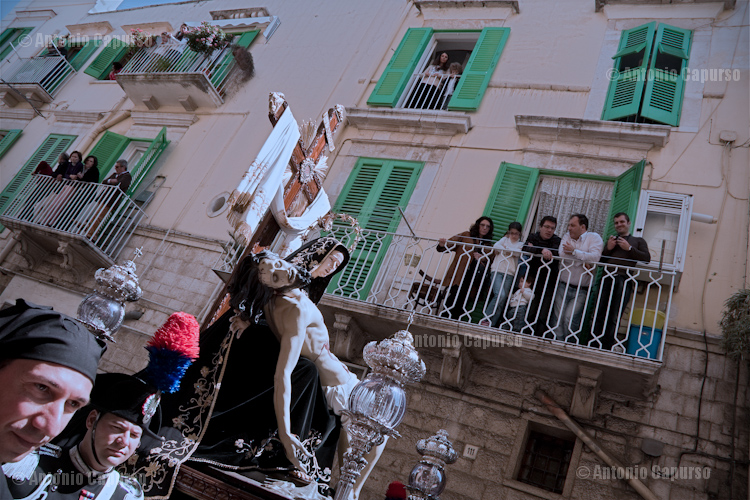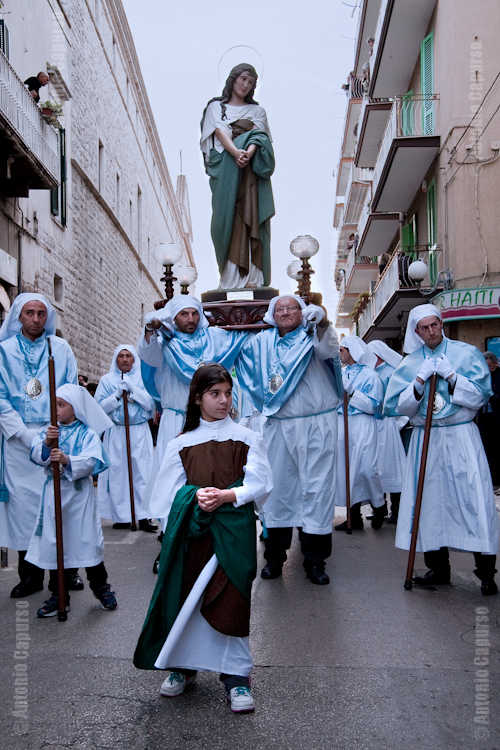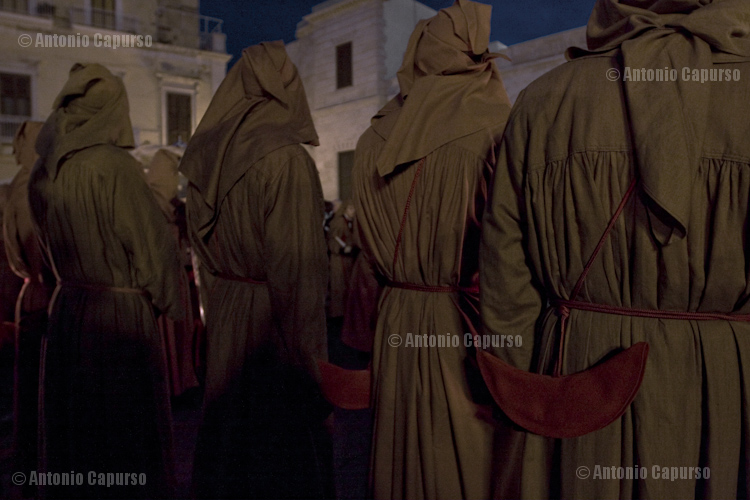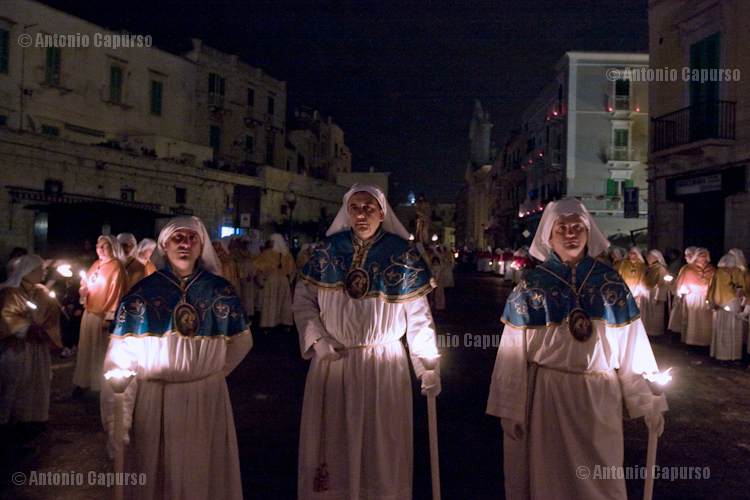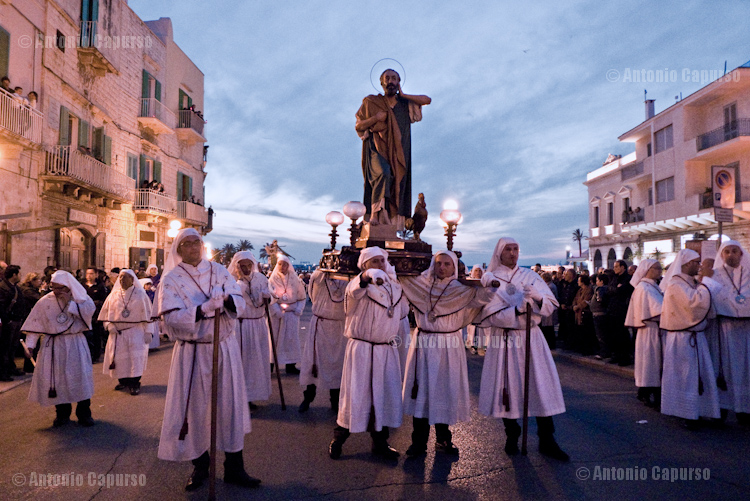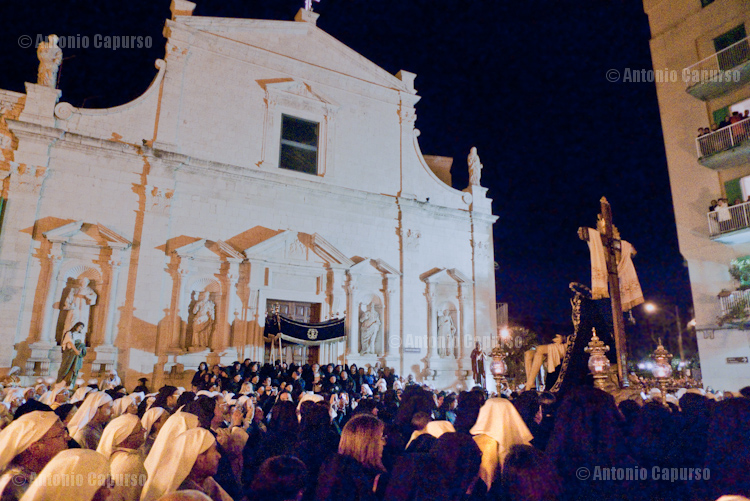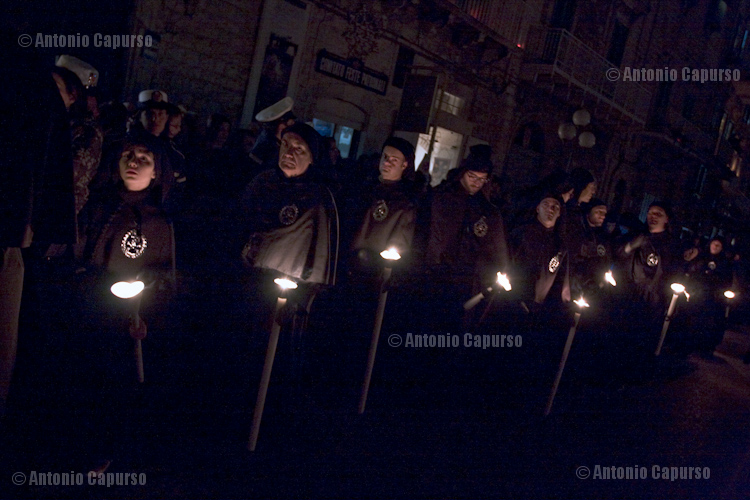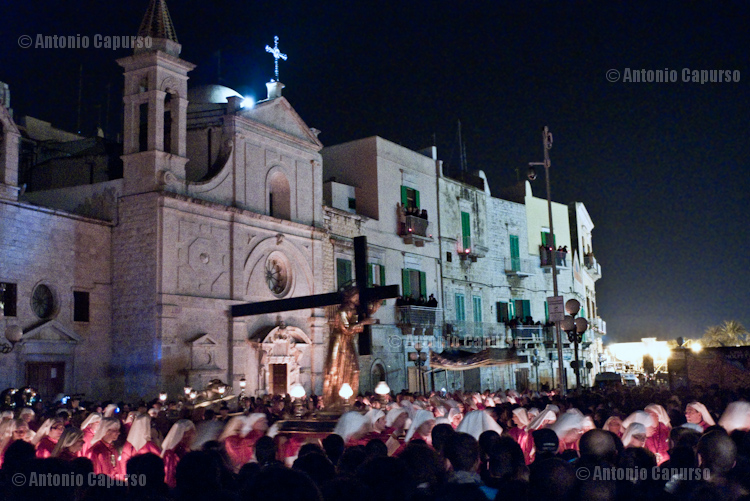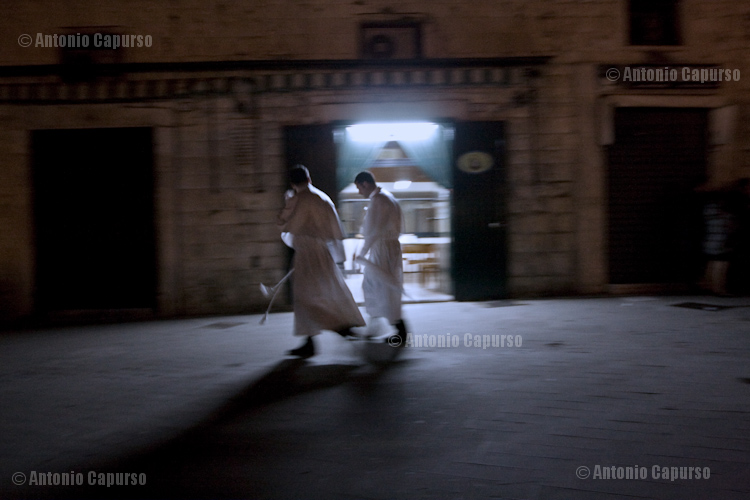
If you are interested in buying prints of my work, a selection of my photographs is now available at Saatchi Art:
https://www.saatchiart.com/antoniocapurso
(Feel free to let me know if your favourite photographs are not in the above selection)
“Tradition cannot be inherited, and if you want it you must obtain it by great labour”
T.S. Eliot
The Holy Week rituals are one of the last true popular traditions in Molfetta (Bari, south-eastern Italy). In our modern and fast society, some practices have remained unchanged for decades, even centuries.
The Easter traditional rituals in Molfetta begin one week before the holy week, on the Friday but reach their peak on Good Friday and Saturday. Celebrations and rituals foreshadow Easter days, when the religious feeling is stronger.
On the Holy Thursday local churches prepare “sepulchers” (symbolic representations of the place where Christ laid after his death and eventually resurrected), which are richly adorned and open to the public. Saint Stephen and Purgatory Churches exhibit the statues that will be carried across the city streets during the upcoming processions.
On Good Friday, the Holy Mysteries Procession is performed. The statues (Christ in the Gethsemane, The Whipped Christ, Christ with his crown of thorns, Christ ascending the Calvarium, the Dead Christ) start their procession at three in the morning from Saint Stephen Church (with the last statue – the Dead Christ – leaving the church at 4 am).
On the Holy Saturday the Piety Procession takes place; its characteristic seven statues were carved by a local artist called Giulio Cozzoli. The parade starts from the Purgatory Church at eleven in the morning. The Piety statue (the most famous of this procession) leaves the church at midday. The statues included in this procession are: Saint Peter, Veronica, Saint Mary Cleofe, Saint Mary of Salomè, Saint Mary Magdalene, Saint John the Apostle, and the aforementioned “Piety”.
It is traditional for a local marching band to accompany the parades following an itinerary that has remained almost unchanged for centuries. The band follows the statue bearers throughout the procession performing funeral marches mostly by local composers.
The “Confraternities” have a major role in the rituals. These fellowships of worshippers trace their origin back centuries. For example, the Saint Stephen Confraternity is believed to be founded around 1000 AD.
These fellowships, originally created for compassionate purposes, still survive today and they are proud of their original principles and motivations and each have their own traditional robes which they wear during the processions.
A special thank you to my dear friend Carlo Pasculli, for his invaluable help during the creation of this reportage.
– – – – – – –
“La tradizione non si può ereditare; e chi la vuole deve conquistarla con grande fatica” (T.S. Eliot)
I rituali e le processioni della Settimana Santa rimangono l’unica vera tradizione popolare rimasta a Molfetta. Nell’euforia e nella velocità della nostra modernità ci sono ancora gesti e pratiche che rimangono pressoché immutati per decenni, per secoli.
Le tappe della tradizione pasquale molfettese, che raggiunge il suo culmine il Venerdì e il Sabato Santo, iniziano dal venerdì antecedente alla Domenica di Passione. Le celebrazioni e i rituali di questo periodo preparano il terreno agli ultimi giorni antecedenti la Pasqua, i più ricchi e sentiti dalla comunità molfettese.
Il Giovedì Santo nelle chiese cittadine sono allestiti ed aperti al pubblico i repositori, chiamati comunemente sepolcri, in cui i tabernacoli dell’eucaristia sono decorati e ornati nei modi più disparati. Le chiese di Santo Stefano e del Purgatorio espongono le statue che saranno portate in processione il Venerdì e il Sabato Santo.
Il Venerdì Santo si celebra la Processione dei Santi Misteri. L’uscita avviene dalla Chiesa di Santo Stefano, ed inizia alle tre del mattino. L’ultima statua è fatta uscire sempre alle quattro del mattino. Le sculture che compongono questa processione sono: Gesù nell’orto degli ulivi, Gesù flagellato, Gesù coronato di spine, Gesù sale il Calvario, Gesù Morto.
Il Sabato Santo si officia la Processione della Pietà; le sette statue che la compongono sono opera dello scultore molfettese Giulio Cozzoli. Il corteo ha inizio dalla Chiesa del Purgatorio, alle ore undici del mattino; la Pietà, l’ultima e la più celebre della serie, esce sempre alle dodici in punto. Le statue di questa processione sono: San Pietro, La Veronica, Santa Maria Cleofe, Santa Maria di Salomè, Santa Maria Maddalena, San Giovanni Apostolo, e la già citata “Pietà”.
Le processioni – il cui itinerario è rimasto sostanzialmente immutato per più di un secolo – sono accompagnate, per tutto il percorso, dalla banda cittadina che esegue le marce funebri (spesso di origine autoctona), cadenzando il passo dei portatori delle statue. Un ruolo fondamentale nei rituali hanno le Confraternite. Questi sodalizi di fedeli affondano le proprie radici assai indietro nella storia del nostro Paese, una storia fatta di secoli e addirittura di millenni (alcuni ritengono sia corretto datare l’origine della Confraternita di Santo Stefano dal Sacco Rosso, ad esempio, attorno all’anno Mille). Originariamente nate con scopi caritatevoli e misericordiosi, queste aggregazioni di fedeli permangono fino ai giorni nostri, giustamente gelose e rispettose dei propri principi originari.
Un sentito ringraziamento al mio amico Carlo Pasculli, per l’aiuto e il contributo offerto alla realizzazione di questo reportage.
